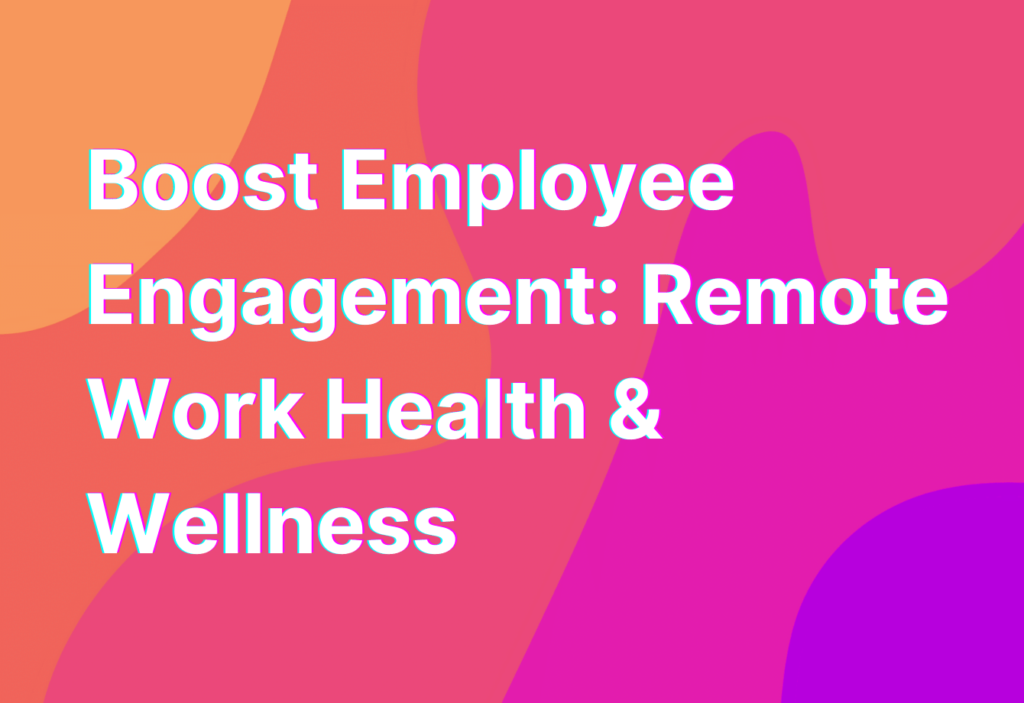Boost Employee Engagement: Remote Work Health & Wellness
Hey there, remote work warriors! It’s Ashley, your friendly neighborhood remote work advocate, here to chat about a topic near and dear to my heart: health and wellness in the remote work world. As someone who has been working remotely for over 10 years as a marketing manager in the tech industry, I’ve learned a thing or two about the importance of taking care of yourself while working from home. So, grab your favorite cup of tea (or coffee, if that’s more your style) and let’s dive in!
The Importance of Health and Wellness in Remote Work
When it comes to remote work, it’s easy to fall into the trap of thinking that you can work from anywhere, at any time, without any consequences. But the truth is, neglecting your health and wellness can have a serious impact on your productivity, happiness, and overall well-being. That’s why it’s crucial to prioritize self-care and make it a part of your daily routine.
Now, I know what you’re thinking: “But Ashley, how do I even begin to prioritize my health and wellness when I have a million things on my to-do list?” Trust me, I get it. That’s why I’ve put together a list of practical tips and strategies to help you boost your employee engagement and take care of yourself at the same time. Let’s check them out!
1. Create a Dedicated Workspace
One of the biggest challenges of remote work is separating your work life from your personal life. Without a physical office to go to, it’s easy for work to spill over into your personal space, making it difficult to switch off and relax. That’s why it’s important to create a dedicated workspace that is separate from the rest of your home.
Whether it’s a spare room, a corner of your living room, or even just a desk in your bedroom, having a designated area for work can help you mentally separate your work life from your personal life. Plus, it’s a great way to stay organized and keep all your work-related items in one place.
Pro tip: If you’re short on space, consider investing in a room divider or a noise-canceling headset to create a sense of separation and privacy.
2. Set Boundaries and Stick to Them
When you work from home, it’s easy for your work hours to bleed into your personal time. Before you know it, you’re answering emails at 10 p.m. and working on weekends. But here’s the thing: setting boundaries is essential for maintaining a healthy work-life balance.
Start by defining your work hours and communicating them to your team and clients. Let them know when you’re available and when you’re not. And most importantly, stick to those boundaries. Resist the temptation to check your work email during dinner or take on extra projects outside of your designated work hours.
Remember, you’re not a superhero (even though you might feel like one sometimes). It’s okay to take breaks, set limits, and prioritize your well-being.
3. Move Your Body
Working from home often means spending long hours sitting in front of a computer screen. And while it may be tempting to stay glued to your chair all day, it’s important to get up and move your body regularly.
Take short breaks every hour to stretch, walk around, or do a quick workout. Not only will this help prevent stiffness and muscle aches, but it will also boost your energy levels and improve your focus.
Pro tip: If you’re looking for some fun and effective at-home workouts, check out Fitness Blender. They offer a wide range of free workout videos for all fitness levels.
4. Prioritize Mental Health
Working remotely can sometimes feel isolating, especially if you’re used to the hustle and bustle of an office environment. That’s why it’s important to prioritize your mental health and find ways to stay connected with others.
Make time for virtual coffee breaks with your colleagues, join online communities or forums related to your industry, or even consider working from a coworking space a few days a week to get some human interaction.
Additionally, don’t be afraid to seek professional help if you’re struggling with your mental health. There are plenty of online therapy platforms, like BetterHelp and Talkspace, that offer remote counseling services.
5. Take Advantage of Remote Work Benefits
One of the great things about remote work is the flexibility it offers. So why not take advantage of it to prioritize your health and wellness?
Use your flexible schedule to fit in regular exercise, prepare healthy meals, and take breaks to recharge. Take advantage of the time you save on commuting to do something you enjoy, whether it’s reading a book, practicing yoga, or spending time with your loved ones.
Remember, remote work is all about finding a balance that works for you. So don’t be afraid to experiment with different routines and strategies until you find what makes you feel happy and healthy.
Wrapping Up
Well, my fellow remote work enthusiasts, we’ve reached the end of our health and wellness journey. I hope you found these tips helpful and that you’re feeling inspired to prioritize your well-being while working remotely.
Remember, taking care of yourself is not only important for your own happiness and productivity, but it also sets a positive example for your colleagues and team members. So let’s lead the way in creating a remote work culture that values health and wellness.
And speaking of creating a positive remote work culture, if you’re interested in learning more about inclusive leadership and how it can boost remote employee engagement, check out this link. It’s a great resource that dives deeper into the topic.
Until next time, stay healthy, stay happy, and keep rocking that remote work life!


